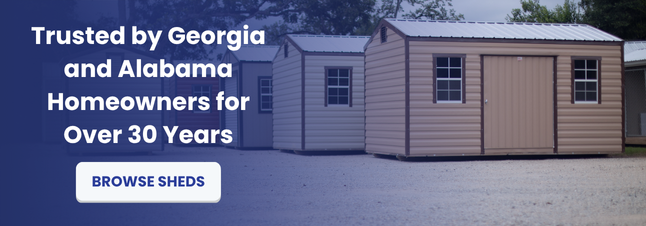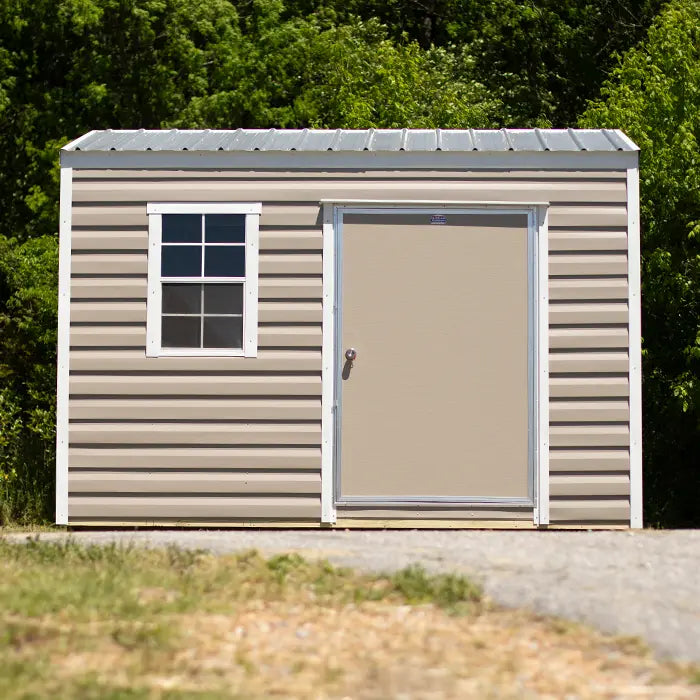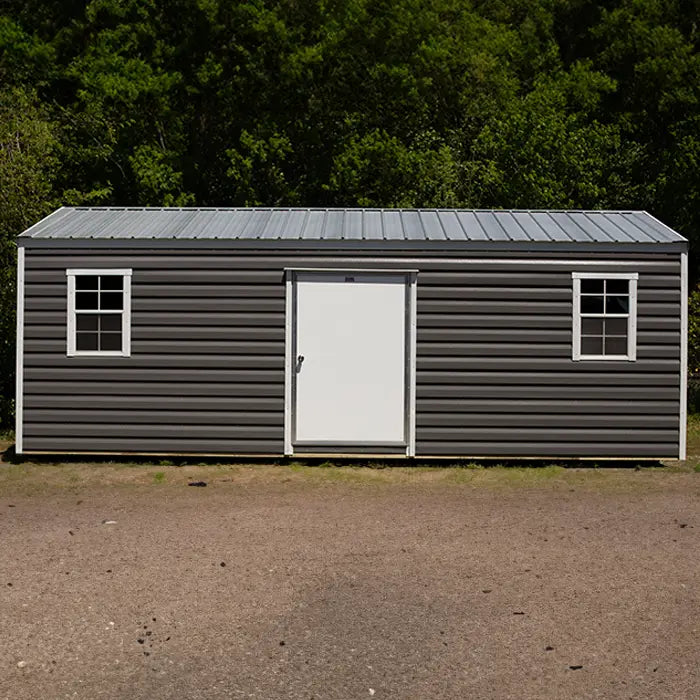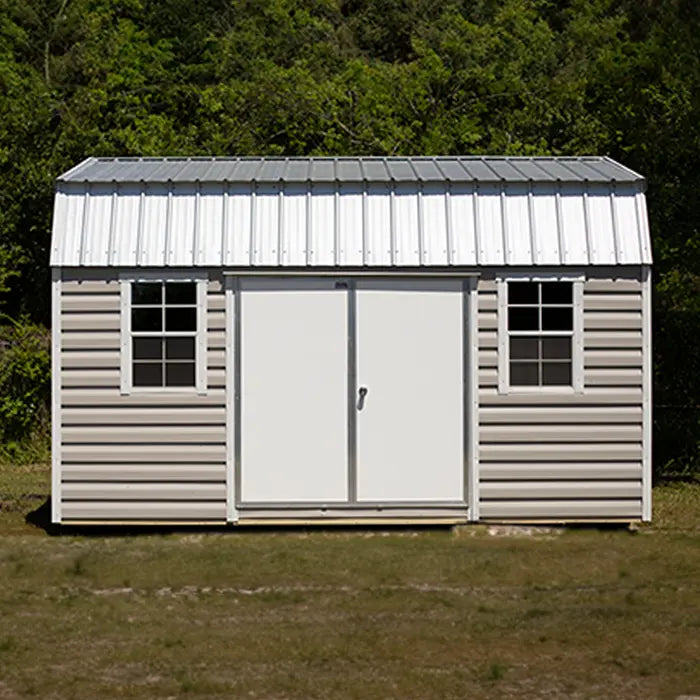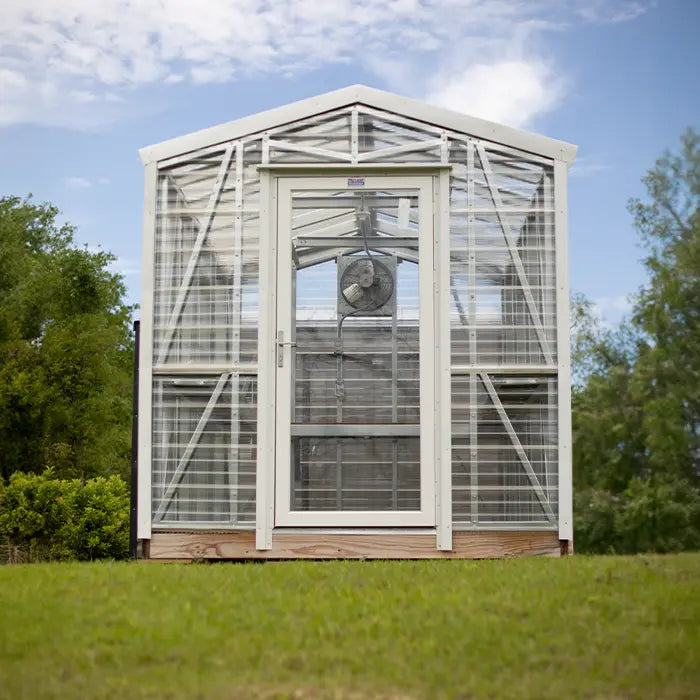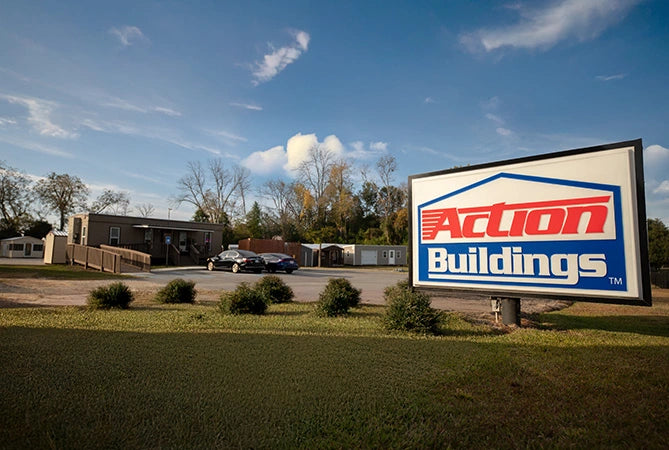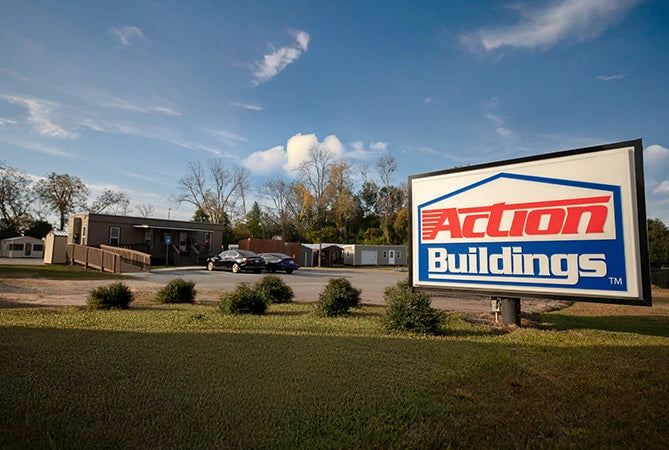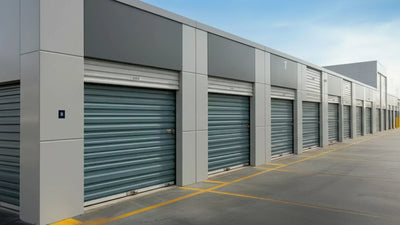Adding a portable storage building to your property is a smart investment. These structures offer flexibility, affordability, and convenience, making them an increasingly popular choice for homeowners and business owners alike. Before you set one up, though, there’s one crucial step you can’t afford to overlook: permits and zoning regulations.
Understanding local permitting requirements for portable buildings can save you from unexpected fines, delays, or even the hassle of having to remove your shed entirely. Regulations vary, so what’s allowed in one location might require a permit in another.
From defining what qualifies as a portable storage building to outlining the steps for obtaining a permit, this guide will help you navigate the process with confidence—so you can enjoy your new portable shed without roadblocks.
What Is a Portable Storage Building?
A portable storage building is a movable, non-permanent structure designed to provide additional storage or functional space without extensive construction. Unlike buildings with a fixed foundation, portable buildings are designed to be relocated. They range from portable storage sheds and mobile sheds to portable metal buildings, garages and more.
Common uses for portable storage buildings include storing tools and outdoor equipment, organizing seasonal decor, or even serving as a home office or workshop. Some people also use them as portable cabins, while others rely on portable motorcycle garages to protect vehicles from the elements. The versatility makes them an attractive solution for those who need extra space without the hassle of major construction.
When it comes to permitting, how a portable storage shed is classified can impact whether or not it requires approval from local authorities. In some areas, smaller, non-permanent structures are considered personal property and may not require permits, whereas larger portable metal buildings or structures with utilities could be classified as real property, subjecting them to stricter regulations.
Do You Always Need a Permit for Portable Storage Buildings?
In many cases, small portable sheds or mobile sheds that are truly temporary and easily moved don’t require a permit. However, larger portable storage sheds, portable cabins, or structures with permanent foundations may be subject to local building regulations.
Generally, if a portable storage building falls below a specific size threshold—often under 120 square feet—it may be exempt from permitting requirements. These smaller structures are considered accessory buildings and typically don’t require formal approval as long as they comply with zoning regulations regarding placement and setbacks.
As soon as a portable garage, portable storage shed, or mobile garage exceeds the local size limit, a permit is usually required.
Other factors that may trigger permit requirements include the addition of utilities. For example, local authorities may classify portable cabins with electrical wiring, plumbing, or HVAC as permanent structures, requiring compliance with stricter building codes. Additionally, some counties and municipalities regulate structures based on their foundation type. Portable metal buildings placed on a concrete slab may also require a permit.
Since regulations vary widely, it’s essential to check with your local building department before purchasing or installing a portable storage building.
Don’t Overlook These Key Factors That Affect
Permitting Needs
Even though metal portable buildings are designed to be movable, that doesn’t mean they’re automatically exempt from local permitting requirements. Several key factors influence whether or not you need a permit. Ignoring these details could lead to compliance issues, fines, or even the need to relocate or remove your shed.
Size
The size of your storage building is one of the most important factors in determining whether or not a permit is needed. Many municipalities have size thresholds that dictate when a permit is required. Typically, smaller portable motorcycle garages or mobile sheds under 100–120 square feet may not require approval. Anything larger often does.
Local regulations also vary in terms of height and footprint restrictions. A compact portable garage used for storing lawn equipment might not require approval. But a lofted barn-style portable storage shed with additional overhead space could require a permit.
Foundation Type
In many cases, outdoor storage sheds that rest on gravel, wooden skids, or cinder blocks count as temporary structures. If you place your portable garage building on a concrete slab or secure it with permanent footings, your area may classify it as a permanent structure. This can trigger stricter regulations.
Some areas specifically regulate sheds based on their foundation type, with requirements varying between urban and rural locations. Before choosing a foundation for your portable storage building, check with your local building department.
Intended Use
How you plan to use your portable storage building can significantly impact whether or not a permit is required. If your mobile garage or shed is used strictly for storage space or to protect your belongings, it’s more likely to be classified as an accessory structure that may not require a permit. As soon as the building serves a different function, such as a workshop, home office, or guest space, local regulations often come into play.
Buildings you will occupy regularly or use for commercial purposes typically require more oversight. For example, a portable storage shed turned into a home office with electricity might go from a simple storage structure to a livable space, triggering additional permits and inspections.
Local Regulations
Every city and county has its own zoning laws and building codes that dictate where and how mobile buildings can be placed. While some areas have lenient rules, others have strict requirements that could limit your options. Additionally, certain neighborhoods or homeowners associations (HOAs) enforce their own restrictions regarding the size, height, and placement.
Before purchasing a portable building, it’s essential to check with your local building department and review any applicable zoning laws. Some areas may have setback requirements, meaning the shed must be placed a certain distance from property lines or other structures. Others may prohibit certain types of portable buildings altogether. Doing your research upfront can prevent costly mistakes and ensure your new shed is fully compliant with local regulations.
Steps to Obtain a Permit for a Portable Storage Building
If your portable shed requires a permit, the process is usually fairly straightforward. Each city and county has different requirements, so it’s important to follow local guidelines to ensure compliance.
-
Step 1: Contact Your Local Building Department. They can provide details on whether a permit is required based on the size, foundation, and intended use of your structure.
-
Step 2: Gather Necessary Documents. Most permitting offices require specific documents, such as a site plan showing where the portable garage will be placed, a detailed description of the structure, and proof of property ownership.
-
Step 3: Submit Your Permit Application and Pay Fees. Once you have all the necessary documents, you’ll need to submit your application along with any applicable fees. Costs vary depending on your location and the size of the shed.
-
Step 4: Await Inspection (If Required). Some areas require an inspection before approving the permit, especially for portable storage sheds placed on permanent foundations or with utility connections.
-
Step 5: Make Any Necessary Adjustments. If the inspector requests modifications—such as changing the mobile shed’s placement—you’ll need to make those changes before receiving final approval. Once approved, you’ll have the green light to install your building without concerns about compliance issues.
Common Mistakes to Avoid When Installing Portable Storage Buildings
Installing portable buildings may seem simple, but overlooking key details can be costly. Many homeowners assume portable sheds are automatically exempt from permits. But failing to check regulations can result in fines or unnecessary headaches.
Failing to Check Local Zoning Laws
One of the biggest mistakes homeowners make is skipping the step of verifying local zoning laws. Just because portable garage buildings are movable doesn’t mean they can go anywhere on your property. Some areas have strict regulations regarding size, placement, and setbacks from property lines. If your shed doesn’t comply, you may need to relocate or remove it entirely.
Skipping HOA or Neighborhood Approval
If you live in a neighborhood governed by an HOA or other community rules, don’t assume your portable shed is automatically allowed. Many HOAs have restrictions on shed size, height, color, or visibility from the street. Skipping this step could result in penalties or an order to remove your shed after installation.
Overlooking Foundation Requirements
Some jurisdictions require permits for portable cabins or portable storage sheds placed on permanent foundations. Additionally, an improper foundation can lead to drainage issues or difficulty relocating the shed if needed. Before installing your portable storage building, confirm whether a foundation is required. Then select an option that aligns with both structural needs and local regulations.
Not Confirming Utility Rules
If you plan to add electricity, plumbing, or HVAC to your portable metal building or mobile garage, you might need additional permits. Many local governments have strict guidelines for utility installations to ensure safety and compliance with building codes. Skipping this step could lead to fines or the need to redo electrical or plumbing work.
Assuming All Portable Buildings Are Exempt from Permitting
Many homeowners believe that all portable storage buildings are automatically permit-free. Still, local regulations often consider factors like size, height, and intended use when determining whether a permit is necessary. Larger metal portable buildings with add-ons like insulation may require a permit even if they're technically movable.
Make Shed Ownership Simple & Affordable with Portable Storage Buildings
By understanding local permitting requirements, choosing the right size and foundation, and avoiding common mistakes, you can enjoy the benefits of portable sheds without complications. Whether you're looking for extra storage, a workspace, or a weatherproof shelter, taking the time to check regulations ensures a smooth and hassle-free installation.
At Action Buildings, we make shed ownership simple and offer a wide selection of high-quality portable metal sheds. Our sheds come in a variety of styles, making it easy to find the perfect solution—without the guesswork. Shop our selection today and take the next step toward owning a portable storage solution that works for you!
